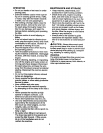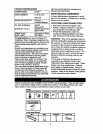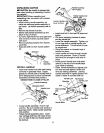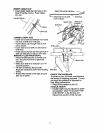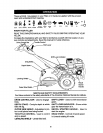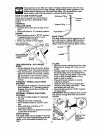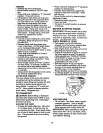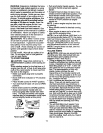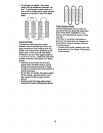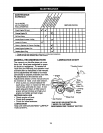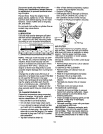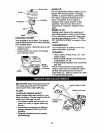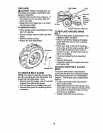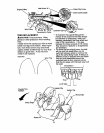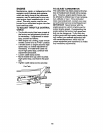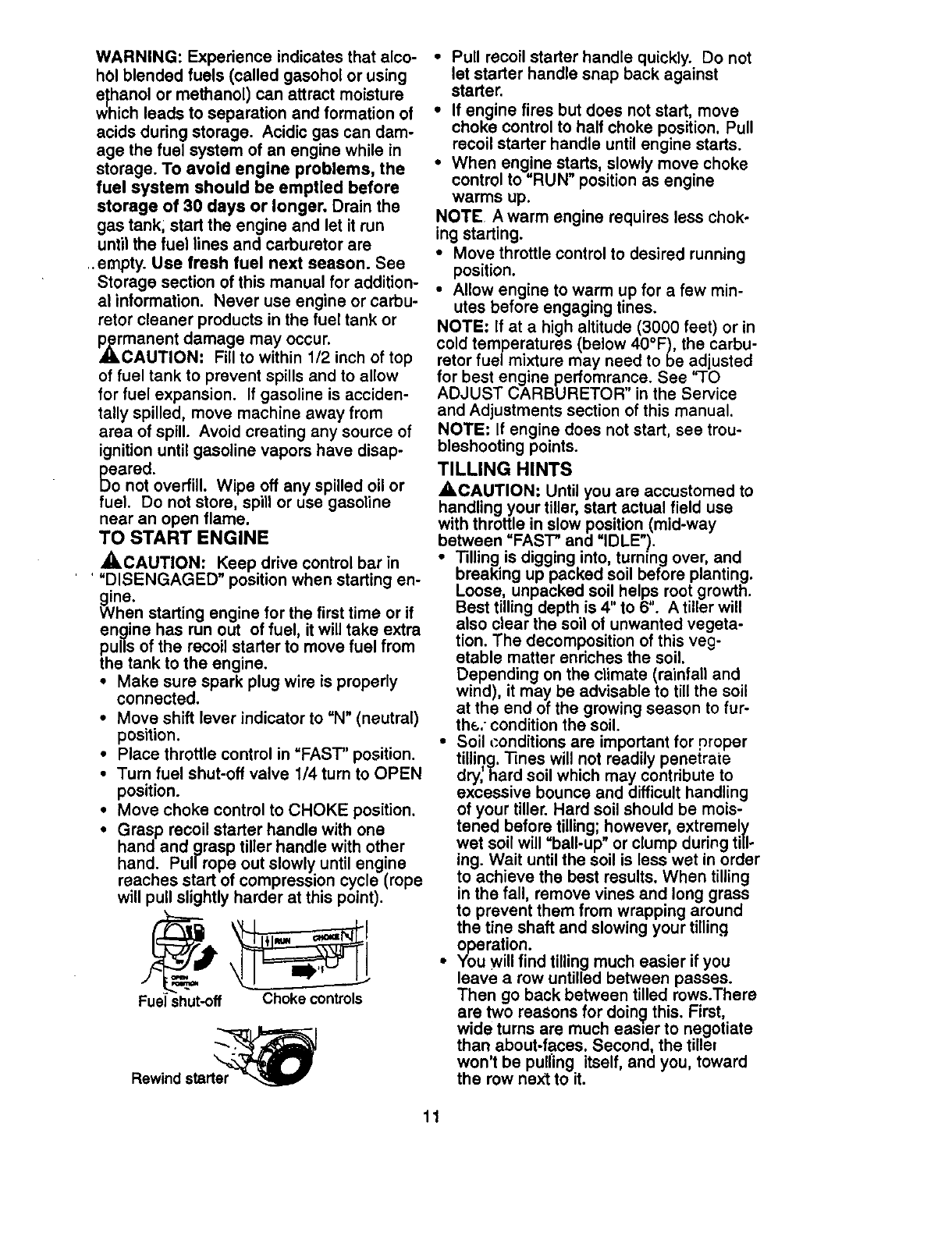
WARNING:Experienceindicatesthat alco-
h01blendedfuels(calledgasoholor using
ethanolor methanol)canattractmoisture
whichleadsto separationandformation of
acids during storage. Acidic gas can dam-
age the fuel system of an engine while in
storage. To avoid engine problems, the
fuel system should be emptied before
storage of 30 days or longer. Drain the
gas tank, start the engine and let it run
until the fuel lines and carburetor are
. empty. Use fresh fuel next season. See
Storage section of this manual for addition-
al information. Never use engine or carbu-
retor cleaner products in the fuel tank or
P_rcmanent damage may occur.
AUTION: Fill to within 1/2 inch of top
of fuel tank to prevent spills and to allow
for fuel expansion. If gasoline is acciden-
tally spilled, move machine away from
area of spill. Avoid creating any source of
ignition until gasoline vapors have disap-
peared.
o not overfill. Wipe off any spilled oil or
fuel. Do not store, spill or use gasoline
near an open flame.
TO START ENGINE
._,CAUTION: drive control bar in
pep
DISENGAGED position when starting en-
gWine,
hen starting engine for the first time or if
engine has run out of fuel, it will take extra
pulls of the recoil starter to move fuel from
the tank to the engine.
• Make sure spark plug wire is properly
connected.
• Move shift lever indicator to "N" (neutral)
position.
• Place throttle control in "FAST" position.
• Turn fuel shut-off valve 1/4 turn to OPEN
position.
• Move choke control to CHOKE position.
• Grasp recoil starter handle with one
hand and grasp tiller handle with other
hand. Pul/rope out slowly until engine
reaches start of compression cycle (rope
will pull slightly harder at this point).
Fuel shut-off Choke controls
Rewind start_
• Pull recoil starter handle quickly. Do not
let starter handle snap back against
starter.
• If engine fires but does not start, move
choke control to half choke position, Pull
recoil starter handle until engine starts.
• When engine starts, slowly move choke
control to "RUN" position as engine
warms up,
NOTE A warm engine requires less chok-
ing starting.
• Move throttle control to desired running
position.
• Allow engine to warm up for a few min-
utes before engaging tines.
NOTE: If at a high altitude (3000 feet) or in
cold temperatures (below 40°F), the carbu-
retor fuel mixture may need to be adjusted
for best engine pertomrance. See 'q-O
ADJUST CARBURETOR in the Service
and Adjustments section of this manual.
NOTE: If engine does not start, see trou-
bleshooting points.
TILLING HINTS
_CAUTION: Until you are accustomed to
handling your tiller, start actual field use
with thro_le in slow positio.n.(mid-way
between FAST" and "IDLE ).
• Tilling is digging into. turning over, and
breaking up packed soil before planting.
Loose, unpacked soil helps root growth.
Best tilling depth is 4" to 6". A tiller will
also clear the soil of unwanted vegeta-
tion. The decomposition of this veg-
etable matter enriches the soil.
Depending on the climate (rainfall and
wind), it may be advisable to till the soil
at the end of the growing season to fur-
the. condition the soil.
• Soil conditions are important for proper
tillinQ. Tines will not readily penetrate
dry,'hard soil which may contribute to
excessive bounce and difficult handling
of your tiller. Hard soil should be mois-
tened before tilling; however, extremely
wet soil will "ball-up" or clump during till-
ing. Wait until the soil is less wet in order
to achieve the best results. When tilling
in the fall, remove vines and long grass
to prevent them from wrapping around
the tne shaft and sow ng your tilling
operation.
• You will find tilling much easier if you
leave a row untilled between passes.
Then go back between tilled rows.There
are two reasons for doing this. First,
wide turns are much easier to negotiate
than about-feces. Second, the tille=
won't be pulling itself, and you, toward
the row next to it.
11



